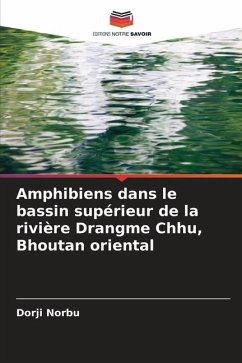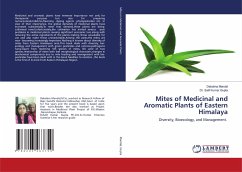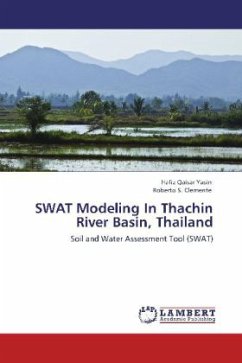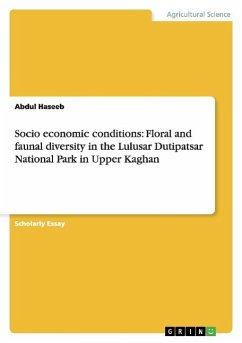
Amphibian in the Upper Drangme Chhu River Basin, Eastern Bhutan
Versandkostenfrei!
Versandfertig in 6-10 Tagen
27,99 €
inkl. MwSt.

PAYBACK Punkte
14 °P sammeln!
Nearly 168 species of amphibians are believed to be extinct and at least 2,469 more have populations that are declining (Stuart, 2004). Out of 7,572 amphibian species (Stuart, 2004), only 40 species of amphibians are so far reported from Bhutan of which of which 38 species are anurans, one caecilian and a Salamander. Amphibian fauna of Bhutan hitherto remain seriously underexplored. Further, majority of the species needs detail taxonomic treatment. The study site is located where the increasing socio-economic developmental activities are posing threat to the existing diverse flora and fauna in...
Nearly 168 species of amphibians are believed to be extinct and at least 2,469 more have populations that are declining (Stuart, 2004). Out of 7,572 amphibian species (Stuart, 2004), only 40 species of amphibians are so far reported from Bhutan of which of which 38 species are anurans, one caecilian and a Salamander. Amphibian fauna of Bhutan hitherto remain seriously underexplored. Further, majority of the species needs detail taxonomic treatment. The study site is located where the increasing socio-economic developmental activities are posing threat to the existing diverse flora and fauna in the country. This paper assessed the diversity of the amphibians and their habitat use pattern in the Upper Drangme Chhu River Basin (UDRB), Eastern Bhutan. In total, 11 species of amphibian were seen in the UDRB. Of which, Megophrys is the most specious with five species, and Amolops and Sphaerotheca are the least with one species each.












